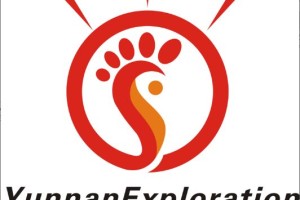
The Costume of Chashan Ethnic People
During the Dehong International Muna Zongge Festival (德宏.国际目瑙纵歌节) in 2010, I had the fortunate opportunity to meet the Chashan people (茶山人) from Pianma (片马) in Nujiang Prefecture (怒江), where I was introduced to their unique and vibrant traditional costumes for the first time. This experience was a significant cultural revelation.
Pianma (片马) is a town located in Lushui County (泸水县), in the western part of Yunnan Province (云南省), China. Known as a key border town, Pianma is home to many ethnic minority groups, including the Lisu (傈僳族) people, and it serves as an important cultural and economic hub for the region. Pianma sits near the Gaoligong Mountain (高黎贡山) and is bordered by Myanmar to the south, with a total land area of 153 square kilometers.
The town is home to diverse ethnic groups, including the Chashan (茶山人) sub-group of the Jingpo people (景颇族), Lisu, Bai, Yi, Naxi, Han, and Nushi (怒族), among others. The Chashan people, one of the indigenous groups of Pianma, maintain a distinct cultural identity, with their own language, customs, and traditional clothing.
Traditional Clothing of the Chashan People
The Chashan people are known for their hardworking nature, simplicity, and hospitality. They have preserved many ancient customs, including their traditional attire which holds deep cultural significance.
While they do not have a written language and do not use the Jingpo script, the Chashan people continue to celebrate their ethnic identity through their clothing, which reflects their long-standing traditions. Their traditional outfits are characterized by bold, vibrant colors, intricate embroidery, and unique designs that hold both aesthetic and symbolic value.
Key Features of Chashan Clothing:
-
Distinctive Patterns: The clothing often features traditional patterns and motifs that are passed down through generations. These designs hold cultural significance and can symbolize aspects of the wearer’s family or community.
-
Bright Colors: The Chashan people use bright colors, particularly reds, blues, and blacks, which represent strength, vitality, and harmony with nature.
-
Embroidered Accessories: Handmade accessories, such as embroidered belts and headpieces, are common in traditional Chashan attire. These accessories often symbolize important cultural markers, such as social status and marital status.
-
Traditional Headdresses: The headdresses worn by the Chashan people are elaborate, often featuring intricate beadwork and designs that are unique to their cultural group.
Cultural Significance of Chashan Attire
The traditional costumes of the Chashan people not only represent their ethnic identity but also carry deep symbolism tied to community values, family heritage, and spiritual beliefs.
Ancient Customs and Traditions
The Chashan people have long preserved various customary rituals associated with marriage, funerals, and community-building ceremonies. These are often accompanied by traditional attire, marking significant life events. Their customs highlight the importance of community unity, mutual support, and respect for ancestral heritage.
-
Marriage and Funeral Customs: The Chashan people’s attire is especially important during key ceremonial events such as weddings and funerals, where traditional clothing is worn to honor the occasion and the individuals involved.
-
Homebuilding Ceremonies: The Chashan people also have a unique homebuilding ceremony, where community members come together to support a family in constructing a new house. Traditional clothing is worn during this ceremony, symbolizing the unity and cooperation of the community.

Preservation of Cultural Heritage
Despite living in a rapidly changing world, the Chashan people continue to preserve their traditional way of life, including their clothing customs. These garments are not only worn for everyday life but are also a symbol of pride and resilience, reflecting the Chashan people’s enduring connection to their land, their ancestors, and each other.
Their distinctive attire has become an important part of ethnic tourism in Pianma Town (片马镇), where visitors can explore the unique culture and traditions of the Chashan community while also learning about their rich history and contributions to the region.
In conclusion, the traditional costumes of the Chashan people are more than just garments; they are a vital link to the past, an expression of cultural identity, and a powerful symbol of community and tradition in Nujiang (怒江).
。








 7 Days GolfingTour
7 Days GolfingTour
 8 Days Group Tour
8 Days Group Tour
 8 Days Yunnan Tour
8 Days Yunnan Tour
 7 Days Shangri La Hiking
7 Days Shangri La Hiking
 11 Days Yunnan Tour
11 Days Yunnan Tour
 6 Days Yuanyang Terraces
6 Days Yuanyang Terraces
 11 Days Yunnan Tour
11 Days Yunnan Tour
 8 Days South Yunnan
8 Days South Yunnan
 7 Days Tea Tour
7 Days Tea Tour
 8 Days Muslim Tour
8 Days Muslim Tour
 12 Days Self-Driving
12 Days Self-Driving
 4 Days Haba Climbing
4 Days Haba Climbing
 Tiger Leaping Gorge
Tiger Leaping Gorge
 Stone Forest
Stone Forest
 Yunnan-Tibet
Yunnan-Tibet
 Hani Rice Terraces
Hani Rice Terraces
 Kunming
Kunming
 Lijiang
Lijiang
 Shangri-la
Shangri-la
 Dali
Dali
 XishuangBanna
XishuangBanna
 Honghe
Honghe
 Kunming
Kunming
 Lijiang
Lijiang
 Shangri-la
Shangri-la
 Yuanyang Rice Terraces
Yuanyang Rice Terraces
 Nujiang
Nujiang
 XishuangBanna
XishuangBanna
 Spring City Golf
Spring City Golf
 Snow Mountain Golf
Snow Mountain Golf
 Stone Mountain Golf
Stone Mountain Golf



